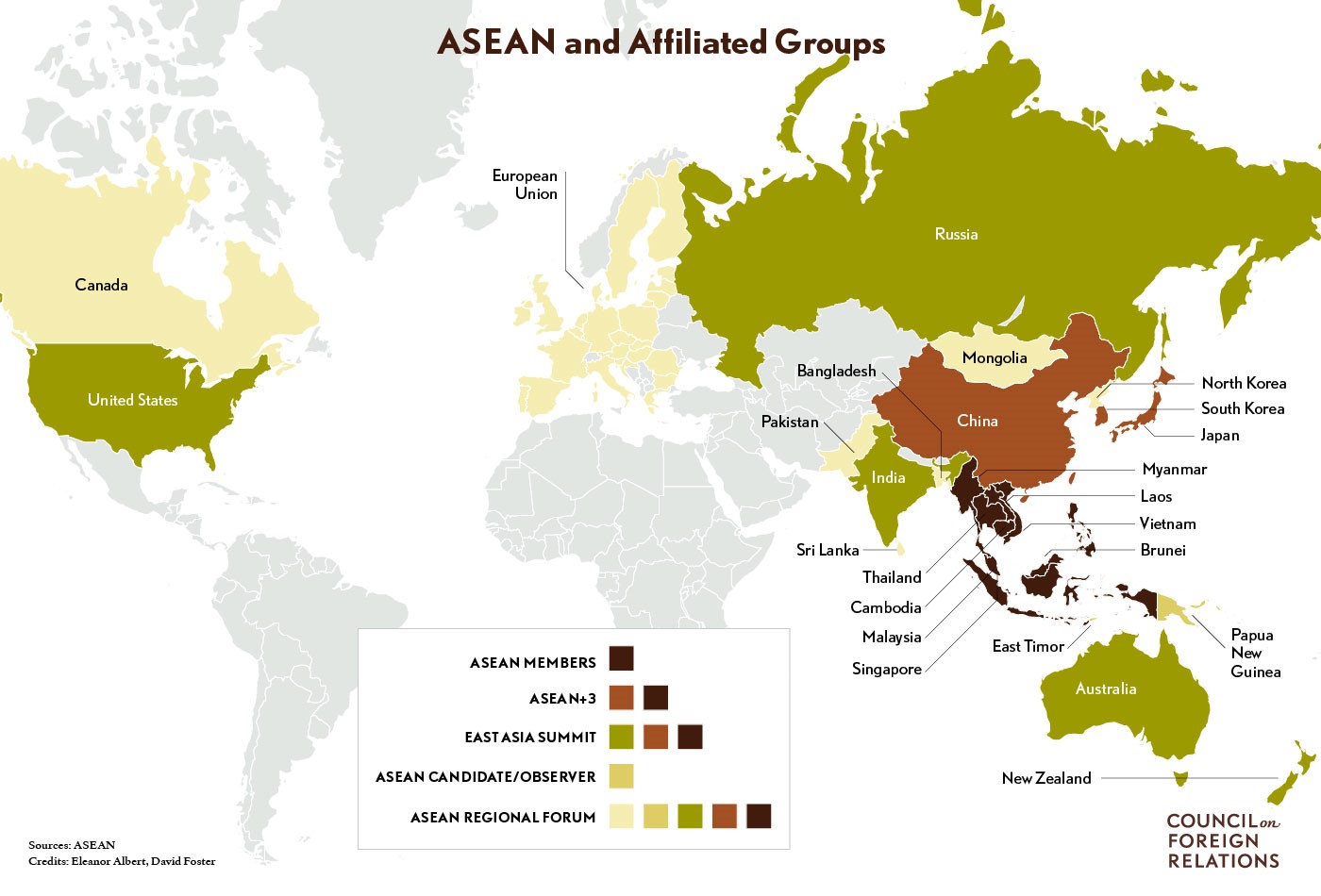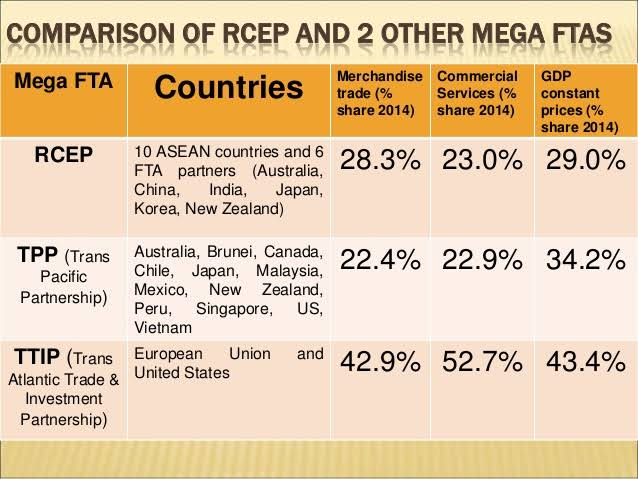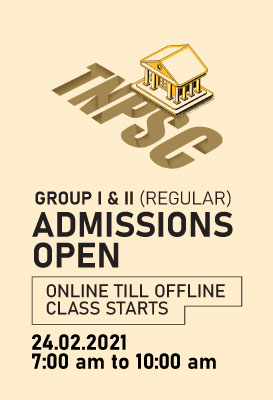PREVIOUS
East Asia Summit & RCEP
November 14 , 2019
2182 days
6620
0
- During three-day visit to Thailand, Prime Minister Narendra Modi has attended the ASEAN-India, East Asia and Regional Comprehensive Economic Partnership (RCEP) summits to strengthen regional cooperation in key areas such as trade, maritime security and connectivity.
- He also highlighted the need for working together to find out common solutions.

East Asia-Summit
- The East Asia Summit (EAS) established in 2005.
- It is a forum of 18 regional leaders for strategic dialogue and cooperation on the key political, security, and economic challenges facing the Indo-Pacific region.
Genesis
- The concept of an East Asia Grouping was first promoted in 1991 by the then Malaysian Prime Minister, Mahathir bin Mohamad.
- The first summit was held in Kuala Lumpur, Malaysia on 14 December 2005.
- Kuala Lumpur Declaration:
- EAS is an “open forum” for dialogue on strategic, political, and economic issues in order to promote peace, economic prosperity, and regional integration in East Asia.
- India is a founding member of the East Asia Summit.
- 14th East Asia summit was held in Bangkok, Thailand.
Membership
- The EAS comprises the ten member states of the Association of Southeast Asian Nations (ASEAN) along with 8 members - Australia, China, Japan, India, New Zealand, the Republic of Korea (South Korea), Russia and the United States.
- Ten member states of the ASEAN are
- Brunei,
- Burma (Myanmar),
- Cambodia,
- Indonesia,
- Laos,
- Malaysia,
- Philippines,
- Singapore,
- Thailand,
- Vietnam.
- The EAS membership represents around 54% of the world’s population and accounts for 58% of global GDP.
- The EAS is an ASEAN-centred forum; it can only be chaired by an ASEAN member.
EAS Chair
- The chair of ASEAN is also the chair of the EAS.
- The role of the ASEAN chair rotates annually between the ten ASEAN member states.
- 2018 chair: Singapore
- 2019 chair: Thailand
Areas of Cooperation
- India endorses regional collaboration in all six priority areas.
- Environment and Energy
- Education
- Finance
- Global Health Issues and Pandemic Diseases
- Natural Disaster Management
- ASEAN Connectivity
Potential
- EAS, representing nearly 50 per cent of the world’s population and over 20 per cent of global trade, is a mega gathering and is a testimony to the rise of Asia.
- EAS is a region of strong and fast-growing economies.
- It is considered the third pole of world economy after the US and Europe.
- Its four major economic players namely Japan, China, India and Korea are among the twelve largest ranking global economies.
- Financial and monetary cooperation between ASEAN+6 or EAS countries could be an area of fruitful cooperation in view of the fact that their combined foreign exchange reserves exceed $ 3 trillion.
- Steps can be taken towards creating an Asian financial architecture that would facilitate partial mobilisation of these reserves for narrowing the development gaps in Asia.
14th East Asia Summit
- East Asia Summit is a leaders-led platform, where discussions are held on various developments in the region.
- The agenda for this edition of the summit was to review the future direction of East Asia Summit co-operation and exchange views on regional and international issues.
- The East Asia Summit is the premier forum in the Asia-Pacific region to deal with issues relating security and defence.

Significance for India:
- For India, EAS acts as an alternative to the APEC (Asia Pacific Economic Cooperation) in which India doesn’t enjoy the membership.
- India’s membership to the EAS is a recognition of its fast growing economic and political clout.
- Act East policy of India:
- In order to build multi-faceted relations with ASEAN and other multilateral nations and strengthen bilateral relations, India has emphasised upon its Act East Policies for which EAS will prove crucial.
- India’s deep cultural and civilizational links with the EAS countries are widely known.
RCEP
- RCEP is proposed between the ten member states of the ASEAN and the six states which has existing Free Trade Agreements.
- Ten member states of the ASEAN are
- Brunei,
- Burma (Myanmar),
- Cambodia,
- Indonesia,
- Laos,
- Malaysia,
- Philippines,
- Singapore,
- Thailand,
- Vietnam
- Following are the six states with which ASEAN has existing FTAs
- Australia,
- China,
- India,
- Japan,
- South Korea and
- New Zealand
- RCEP negotiations were formally launched in November 2012 at the ASEAN Summit in Cambodia.

Aim
- RCEP aims to boost goods trade by eliminating most tariff and non-tariff barriers — a move that is expected to provide the region’s consumers greater choice of quality products at affordable rates.
- The purpose of RCEP is to create an "integrated market" spanning 16 countries.
- It also seeks to liberalise investment norms and do away with services trade restrictions.
Significance
- When inked, it would become the world’s biggest free trade pact.
- These 16 nations account for a little less than half of the world’s population and about a third of the world’s GDP.
- Trade between the 16 countries also makes up a little more than a quarter of global trade.
- This is because the 16 nations account for a total GDP of about $50 trillion and house close to 3.5 billion people.
- India (GDP - PPP worth $9.5 trillion and population of 1.3 billion) and China (GDP - PPP of $23.2 trillion and population of 1.4 billion) together comprise the RCEP’s biggest component in terms of market size.

Recent news
- Broadly speaking, it would lower tariffs and other barriers to the trade of goods among the 16 countries that were in, or had existing trade deals with ASEAN.
- But that’s now down to 15 nations?
- Correct. India pulled out saying it wanted to protect service workers and farmers.
- India has decided not to join the RCEP deal as negotiations failed to address New Delhi's outstanding issues and concerns.
- For now, the remaining 15 nations have decided to go ahead with the agreement without India.
- China, however, announced that India is welcome to join the RCEP whenever it is ready.
India’s issues with RCEP
- The main problem Indian industry has with the RCEP trade deal is that it would give China near-unfettered access to the Indian markets.
- Cheap imports from China have already been seen to be impacting India’s domestic industry, with the Indian government having taken a number of steps to curb such imports.
- According to reports from the various RCEP negotiations that have taken place, India would, under the agreement, reduce duties on 80% of items imported from China.
- While this is a smaller percentage of items as compared to what India is prepared to do for other countries, the figure has nevertheless spooked Indian industry, especially the agriculture and dairy sectors.
- Under the agreement, India would have to cut duties on 86% of imports from Australia and New Zealand, and 90% for products from ASEAN, Japan and South Korea.
- There are several other aspects to the RCEP agreement which include investments and e-commerce that are of major concern as well.
Indian demands
- Base year – Shifting the base year for tariff cuts from 2014 to 2019.
- Import surge – avoiding a sudden surge in imports from China by including a large number of items in an auto-trigger mechanism.
- Rules of origin – stricter rules of origin to prevent dumping from China
- Services – a better deal in services.
Indian concerns
- Negotiations on the details of the RCEP have been on since 2013, and all participating countries aim to finalise and sign the deal by November, 2019.
- Trade deficits
- India runs large trade deficits with at least 11 of the 15 RCEP members.
- China alone accounts for $53 billion of India’s $105 billion trade deficit with these.
- Domestic industry
- China’s need for greater access to the Indian market to sustain its manufacturing industries.
- It will hurt the Indian industry and farmers due to a surge in Chinese imports.
- FTA experience
- India’s experience with FTAs has been underwhelming.
- Niti Aayog suggested that FTA utilisation is in the 5%-25% range.
- Domestic opposition
- Domestically, the RCEP generated considerable opposition with major stakeholders coming out against it – farmers, dairy industry or the corporate sector.
- There are demands by other RCEP countries for lowering customs duties on a number of products and greater access to the market than India has been willing to provide.
- So, the Indian government has decided not to join the Partnership.

**********************************
Leave a Reply
Your Comment is awaiting moderation.


